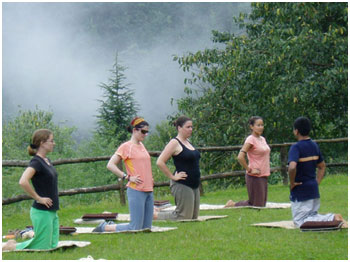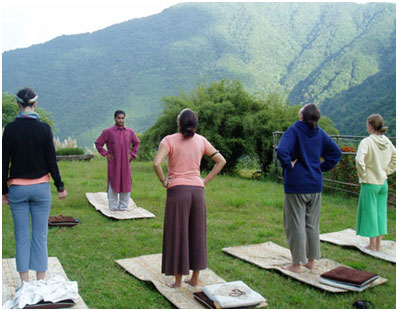- Home |
- Why With Us |
- About Us |
- Booking |
- Contact Us |
- Site Map
- Home
-
Nepal
-
Trekking
- Arun Valley with Gokyo Lakes
- Everest Base Camp Trek
- Everest- A Living Culture Exploration
- Everest Explore
- Everest Base Camp (via Thame) Trek
- Everest Base Camp with Kala Patthar
- Everest Comfort Trek
- Everest High Passes with Ama Dablam Base Camp
- Everest Mani Rimdu Festival Trek
- Everest Nagpa La Trek
- Everest with three high passes
- Gokyo Ri, Chola Pass & Chukung Ri with Kala Patthar
- Gokyo with Everest Base Camp
- Jomsom - Muktinath
- Jomsom - Muktinath
- Khayar Lake Trek
- Manaslu and Tsum Valley with Larkya La
- Upper Mustang Trek
- Manaslu High Circuit
- Manaslu, Tilicho Pass & Upper Mustang
- Annapurna Base Camp Trek
- The Annapurna Circuit Trek
- Annapurna Panorama
- Nar and Phu Valley Trekking
- Nepal Rhododendron Trek
- Royal Trek
- Saribung Trek and Expedition
- Annapurna Sanctuary Trek
- The Annapurna Sunrise Trek
- Expedition
-
Rafting
-
Peak Climbing
-
Tours
- Kathmandu-Chitwan-Jungle Tour with visit to Pokhara
- Dawn to Dusk Tour
- Historical, Natural & Cultural Tour with Camping
- Kathmandu Valley Temple Tour
- Temple - Panorama - Jungle Tour
- Taste of Nepal
- Central Nepal Tour
- Explore Nepal Tour & Trek
- Nepal Cross-country Tour
- Best of Nepal Tour & Treks
- Kathmandu valley rim Tour & Treks
- Nepal Culture Tour
- Introduction to Nepal Tour & Treks
- Nepal at a glance Tour & Treks
- Wonders of Nepal Tour & Treks
- Glimpses of Nepal Tour & Treks
- Through the Silhouette Tour & Treks
- Tent and Temple Tour
- Kathmandu-Chitwan-Pokhara Tour
- Historical, Cultural City and Jungle Tour
- Nepal Wildlife Tour
- Nepal Panorama Historical Tour
- Nepal Adventure Tour
- Nepal Pilgrimage Tour
- Ghalegaun-Ghanapokhara Homestay Tour
- Jungle Safari
- Adventure Sports
-
Trekking
- Tibet
-
Bhutan
-
India
- Yoga Tour
- About Us
-
The Great Himalayan Trail
-
Short Tours/Treks

Why Yoga & Meditation Tours in Nepal
Nepal occupies only about 0.1% of the world’s total land area; yet within this area, there are a total of 118 ecosystems with 75 vegetation types and 35 forest types. It harbors over 2% of the world’s flowering plants, 4.2% mammals and 8.5% of the world’s total birds known so far. It possesses more than 400 species of agricultural crops. Over 19% of the country's land has been designated as protected areas, representing all ecological regions. The elevation of the country ranges from 60 meters above sea level to the highest point on earth, Mt. Everest at 8,848 meters. This wild altitudinal variation fosters an incredible variety of ecosystems, the greatest mountain range on earth, thick tropical jungles teeming with a wealth of wildlife, thundering rivers, forested hills and frozen valleys. Of the total 2,400 km stretch, a full third of its stretches – the formidable Great Himalayan range of 800 kilometers lies within the Nepal Himalaya which has a convergence of 1310 magnificent peaks over 6000 meters, including eight of the world's highest 14 peaks including Mt. Everest (8848meter). Not only the Himalayas, that Nepal is famous for, its southern lowland known as Terai is as much an interesting region to visit. The Terai is a belt of marshy grasslands, and forests located south of the outer foothills of the Himalaya which is teemed with a rich variety of plant and animal life.
The elevation of the country ranges from 60 meters above sea level to the highest point on earth, Mt. Everest at 8,848 meters. This wild altitudinal variation fosters an incredible variety of ecosystems, the greatest mountain range on earth, thick tropical jungles teeming with a wealth of wildlife, thundering rivers, forested hills and frozen valleys. Of the total 2,400 km stretch, a full third of its stretches – the formidable Great Himalayan range of 800 kilometers lies within the Nepal Himalaya which has a convergence of 1310 magnificent peaks over 6000 meters, including eight of the world's highest 14 peaks including Mt. Everest (8848meter). Not only the Himalayas, that Nepal is famous for, its southern lowland known as Terai is as much an interesting region to visit. The Terai is a belt of marshy grasslands, and forests located south of the outer foothills of the Himalaya which is teemed with a rich variety of plant and animal life.
Within this spectacular geography is also one of the richest cultural landscapes anywhere to be found. The country is a potpourri of a large number of ethnic groups and sub-groups who speak over 93 languages and dialects. Nepal is, in essence, a cultural mosaic comprising different caste and ethnic groups belonging to the Tibeto-Burman and Indo-Aryan linguistic families, which is indicative of the waves of migrations that have occurred for over 2000 years from the north and south respectively. Although intermingling between the various groups has occurred, they differ widely in the details of cultures and adaptations, combining elements of Animism, Buddhism, and Hinduism picked up through cultural contacts over the years. In addition, resettlement of the hill and mountain people into the Terai since the 1960s has added a new dimension to the social landscape resulting in an extremely heterogeneous and complex Terai population. Travellers, traders and religious devotees from India, China and Tibet have all added to the historical traditions of Nepal. Over centuries, many diverse groups have settled in Nepal, all contributing to the rich and distinct tapestry that forms Nepalese society today.
is a potpourri of a large number of ethnic groups and sub-groups who speak over 93 languages and dialects. Nepal is, in essence, a cultural mosaic comprising different caste and ethnic groups belonging to the Tibeto-Burman and Indo-Aryan linguistic families, which is indicative of the waves of migrations that have occurred for over 2000 years from the north and south respectively. Although intermingling between the various groups has occurred, they differ widely in the details of cultures and adaptations, combining elements of Animism, Buddhism, and Hinduism picked up through cultural contacts over the years. In addition, resettlement of the hill and mountain people into the Terai since the 1960s has added a new dimension to the social landscape resulting in an extremely heterogeneous and complex Terai population. Travellers, traders and religious devotees from India, China and Tibet have all added to the historical traditions of Nepal. Over centuries, many diverse groups have settled in Nepal, all contributing to the rich and distinct tapestry that forms Nepalese society today.
With such a vast repository of global significance and a total population of about 30 million people, Nepal is undoubtedly a biological as well as a cultural hotspot; offering an astonishing diversity of sightseeing attractions and adventure opportunities found nowhere else on earth. Popular as Lord Buddha’s birthplace and often referred to as the roof of the world or the Shangri-La, Nepal is indeed an ideal destination for Yoga and meditation tour and treks.

Trekking in Nepal
Expeditions In Nepal
Rafting in Nepal
Tours in Nepal
All rights reserved.



